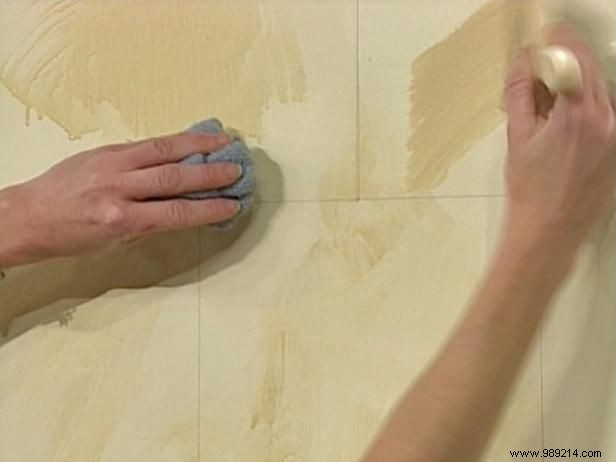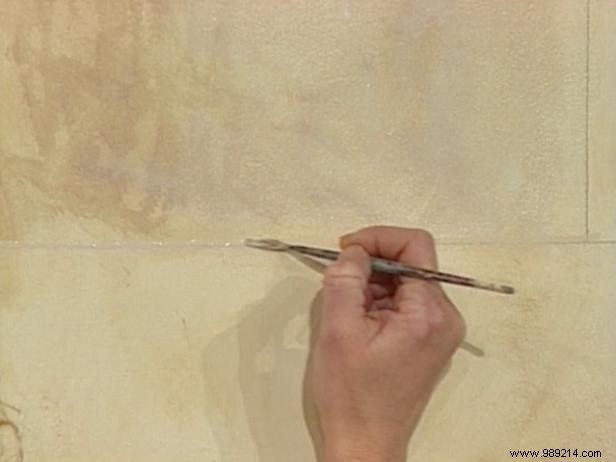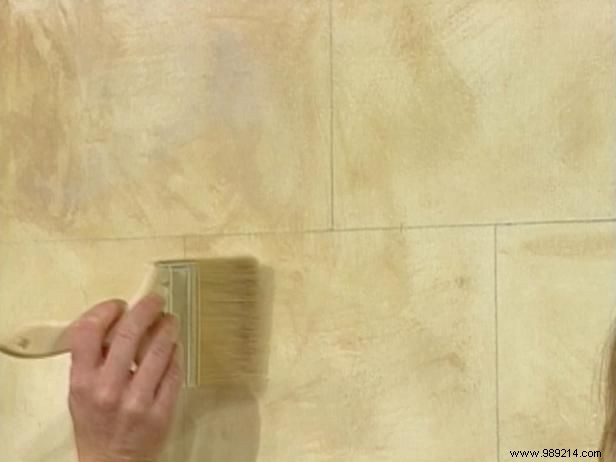Prime the wall with two coats of off-white latex paint and allow it to dry. Use a pencil and ruler to mark the squares that suggest stone blocks. They can be any size appropriate for the environment, but 8" by 16" is the standard size for actual blocks.

To add a warm tone to the wall, apply a limestone colored latex wash. Mix small amounts of brown and yellow paint and dilute with water to the consistency of a thin soup. Brush the wash freely in all directions and rub it on the surface with a cloth. Don't strive for a neatly painted finish.

Use three shades for shadow:brown for a dark shade, off-white for a medium shade, and white for highlight. Mix each color with water until you get a watercolor consistency. To make it look like the light is coming from one side, step on the colors on the wall in the following pattern:the darker color on the left, the middle one in the middle, and the light one on the right side. Freely rub or step on the color on the wall, rubbing the color into the surface as you work.
Thin a mixture of taupe and white cream with water. Using a brush with long bristles, paint the mixture over the pencil lines. The lines must be shown to create the appearance of shadows between the blocks.

Mix up a glaze envelope by combining the glaze liquid, mineral spirits, and tinted colors such as raw wood and raw sienna. Brush the mixture and rub it in to add texture and the appearance of age to the wall.